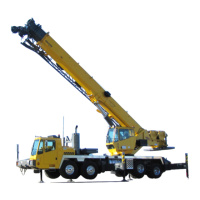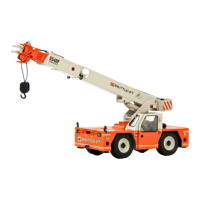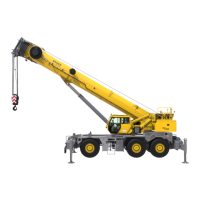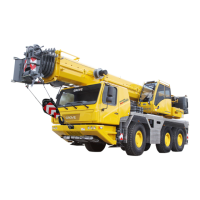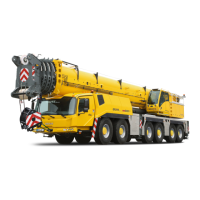OPERATING PROCEDURES TMS9000-2 OPERATOR MANUAL
4-16
Published 02-21-2019, Control # 611-05
Faults on the DEF system
CRANE TRAVEL OPERATION
Active Restraints
Seat Belts
1. Before fastening a seat belt, always adjust the driver’s
seat to the position in which you will drive.
2. Pull the belt across your lap and push the latch plate into
the buckle until it clicks ((Figure 4-16)).
3. To reduce the risk of sliding under the belt during a
collision, position the belt across your lap as low on your
hips as possible and pull it toward the door to a snug fit
so the retractor can take up the slack.
NOTE: The lap/shoulder belt is designed to lock only
during a sudden stop or impact. At other times it
should move freely.
4. If the shoulder belt is too snug, do the following:
a. Pull the shoulder belt out (A) at least 130 mm (5 in)
so that when it is let go, it returns to your chest
((Figure 4-17)).
b. Then pull down on the shoulder belt (B) the least
amount needed to ease pressure but no more than
25 mm (1 inch) and let go.
5. To reduce slack in the belt, pull the belt out as you did in
step 4.a.
6. To unfasten the belt, push in on the button in the center
of the buckle. To store the belt, pull out about 180 mm
(7.1 in) and let go. The belt should retract when the
buckle is unlatched. To help prevent damage to the seat
belt and interior, before closing the door be sure the belt
is fully retracted and the latch plate is out of the way.
Malfunction Cause Solution
Lights up
Flashes
DEF level in tank at reserve
level
DEF tank empty
Refuel DEF.
Light up
DEF reservoir sensor faulty
Error in the DEF dosing unit
DEF lines blocked
Temperature sensor faulty
Cable break in DEF system
Exhaust gas sensor faulty
Have the exhaust system
checked by your local
distributor or Manitowoc
Crane Care, an authorized
GROVE retailer or an
authorized specialized
workshop.
Latch Plate
Buckle
Push Button
FIGURE 4-16
DANGER
Keep any shoulder belt slack to a minimum, no more than
25 mm (1 inch). Belt slack beyond the specified amount
could significantly reduce the amount of protection in an
accident because the belt is too loose to restrain you as
intended.

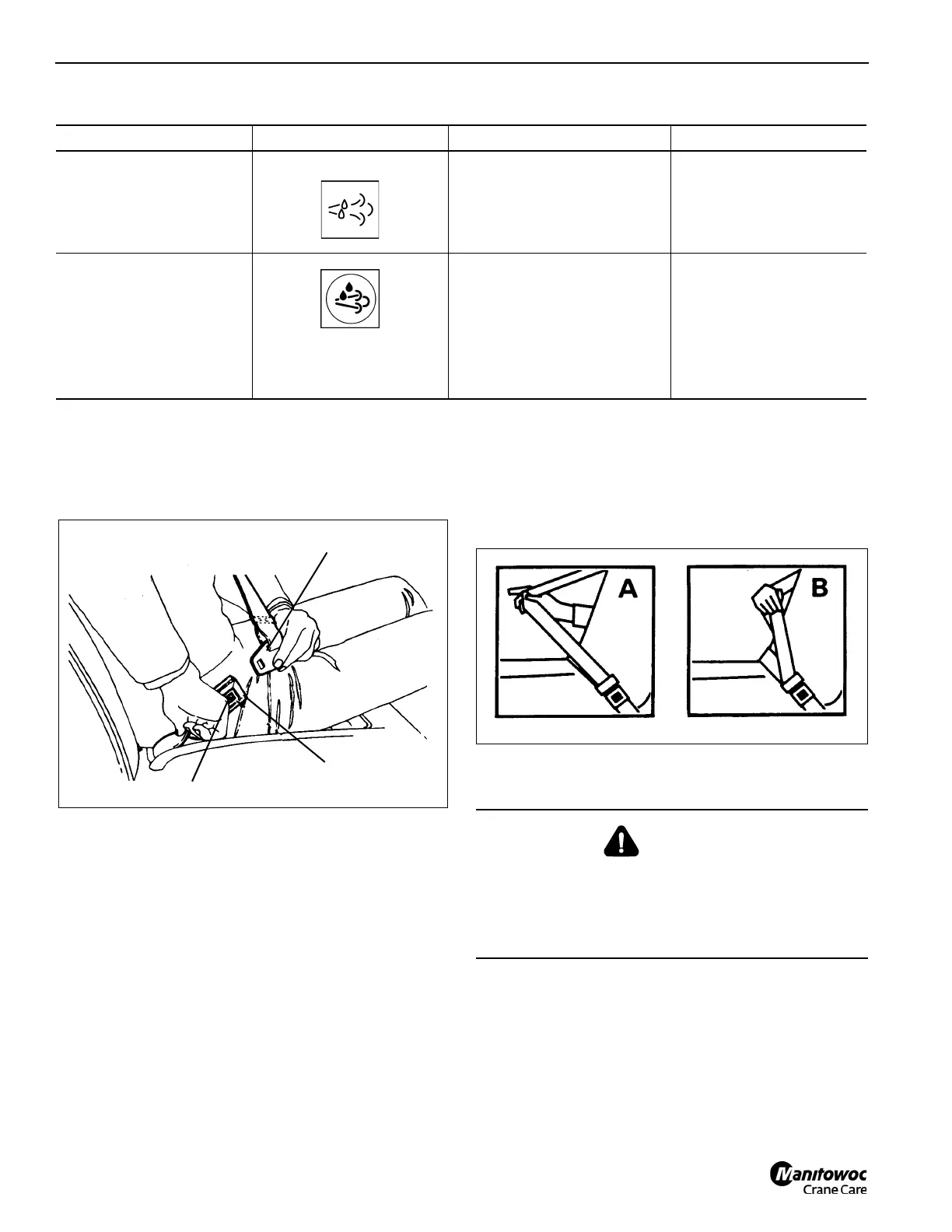